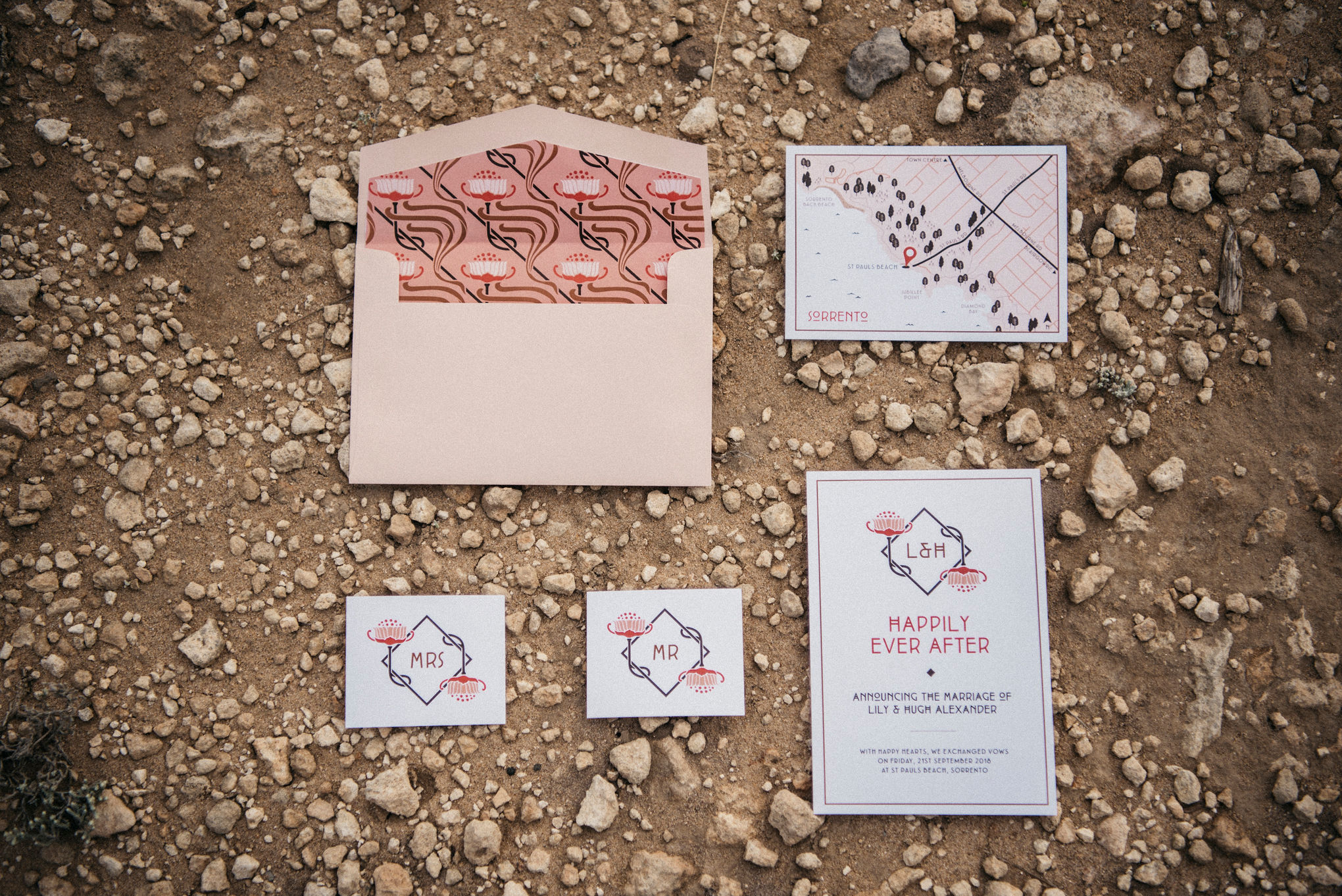In this digital age of Snapchat-ing and overwhelming email inboxes, who isn’t delighted to receive a piece of real mail with happy news? As one of the few times you might send old school snail mail these days, your engagement and wedding invitations (or your save-the-date notices) will provide the first important hints on the day to come for your friends and family.
Choosing a stationer
Will you DIY or stumble upon an indy crafter through Etsy to fashion your invites? Perhaps a fancy established stationery design house or a freelance designer is more your style?
If you choose the path of a pro, there is a full spectrum of wedding stationary options for married couples-to-be. Some suppliers have molded their business model around providing a one-stop shop for doing it yourself, others pride themselves on supplying the consumer with complete matching suites incorporating delicate details such as embossing, letterpress, foiling and the finest paper stock.
Once you’ve decided on your designer or stationary supplier, make time to meet with them. It’s important that you bring with you some inspiration pieces. This will help them understand the style that you are chasing and enable them to make suggestions.
They will also be able to give you a quick briefing on what costs will be associated with particular designs. Remember each manipulation of the paper stock (ie. print, die-cut, foiling etc) will generally incur an additional cost. If you are aiming to stick to a budget, opt for simpler designs which can be just as elegant.
Most stationers will require you to pay a deposit for your order. This is just a natural process that is required to cover the printing costs (nearly all designers /stationary suppliers will outsource the printing).
At this point in the process the supplier should give you a rough timeline.
Be sure to gather as much of the information discussed in writing or follow up email.
Execute your style
The theme of your wedding is defined by your invitation. If your wedding is to be barefoot on a beach your invitations should be more casual. If it is to be a grand gala ball they should be more formal. This signals guests on what to expect and can help them plan their own day.
Colours might reflect what the palette of your theme will be or what shade the bridal party is wearing as a subtle hint to guests as to what not to wear, or - for particularly thoughtful invitees - what hues to wrap a gift in.
Design trends are continuously evolving and one of the most dynamic mediums to find out what’s hot, now, is Pinterest. We also recommend checking general party and event-planning (not just bridal) websites and even Google Image Search if you can’t find what you’re looking for. Or even for an idea of what trends to avoid if you want to be timeless or unique.
The Details
Do include:
The invitee’s name/s (including children if they are being invited)
Ceremony venue name and address
Reception venue
Brief directions (if required)
Full names of parties being married
Parents names as hosts, optional
Day
Date
Time
Dress code
Address/options for RSVPs
RSVP date
Parking, transportation info or costs, longer venue directions, if it is to be an adults only wedding, and bridal registry or details on gift management can be printed on the reverse or separate cards.
Verbiage
As you will undoubtedly discover, planning your wedding day can be a tug-of-war between traditionalism and expressionism. The wording in the invitation goes a long way in describing your direction for guests.
Traditionally the bride’s parents invite the guests, less formally the couple will themselves.
Be specific with whom the invitation is extended to. May sole invitees bring a guest or not? Traditionally all children over 15 should be invited individually and younger children with their parents.
Timing
Set your timeframe for sourcing and delivering your invitations as soon as the bridal party colours are decided. Try not to leave this to less than six months before the wedding day. Most stationary suppliers can work comfortably within this timeframe, but provide yourself with breathing room. Printing and proofing shouldn’t be rushed.
Aim to have the invitations out eight to 12 weeks before the wedding. International guests will require a longer timeline due to travel arrangements.
Proof Reading
A specialist designer should take the onus in proofing of general body copy, however the responsibility to ensure details/spelling is perfect rests entirely with you. They will not proof the names of your attendees - so to be sure you eliminate the risk of calling Mrs. Stockman, Mrs. Sockman - have at least two sets of eyes on this job.
Most importantly: quadruple check the date and time.




